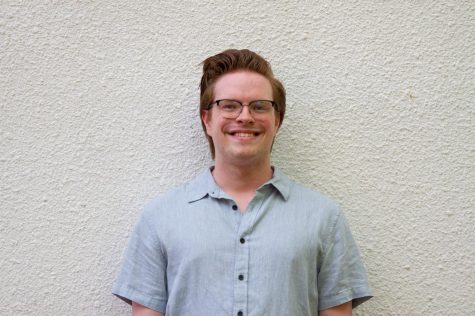Sports Specs with Sam
How the Minnesota Twins stack up against the elite teams in the American League
Photo by SUBMITTED
Regardless of what happens in the postseason, 2019 was a historic season for the Minnesota Twins.
Led by first-year manager Rocco Baldelli, the Twins not only surpassed 100 wins for only the second time in franchise history, but they also set the MLB record for home runs hit in a single season.
They have a powerful lineup led by a mostly-young core. There hasn’t been a more positive outlook for the franchise in at least a decade.
However, despite their impressive record and the fact that they beat out the heavily-favored Cleveland Indians for their first American League Central division crown since 2010, the Twins are still looking down in the playoff seeding at two powerhouses: the Houston Astros and their first opponent in the divisional round, the New York Yankees.
The Astros are the most formidable opponents, as they boast a devastating starting rotation that consists of Justin Verlander, Gerrit Cole and Zack Greinke, along with a great lineup and several quality arms out of the bullpen.
The Yankees are also quite intimidating as they only missed the Twins historic mark in home runs this season by one. While their starting rotation is nowhere near the caliber of the Astros, they have an excellent bullpen to lean on this postseason.
The lineup is certainly not a concern for the Twins, as their depth has allowed them to continue to produce one of the top offenses in baseball, despite some injury issues all throughout the season.
The addition of Nelson Cruz this offseason was an enormous boost to their already powerful lineup, as he lead the team with 41 home runs.
Miguel Sano turned in a great comeback season after struggling last year to the point of being sent down to the minors. He hit 34 home runs after missing the first month and a half of the season due to injury.
Mitch Garver and Luis Arraez had breakout seasons that no one could have predicted. Garver performed as one of the best hitting catchers in the league and Arraez turned in an outstanding .334 batting average with a .399 on base percentage, which are numbers that greatly surpassed any expectations of him in a season that he began in the minors.
Minnesota came into the season with their young core of hitters Max Kepler, Eddie Rosario and Jorge Polanco headlining their lineup, and they all performed quite well.
Outfielders Kepler and Rosario combined to hit 68 home runs, and Polanco was named the starting shortstop for the All Star Game while hitting an impressive .296 with a .357 on-base percentage while adding 22 home runs.
The Twins were able to rely on depth pieces like Jake Cave down the stretch to deal with their injuries, but will face the postseason without center fielder Byron Buxton.
In addition, the health statuses of Kepler and Arraez are unknown.
How the Twins’ pitching staff performs will more than likely be the deciding factor on whether they are competitive in the playoffs.
The handling of the starting rotation is definitely a huge question and there are many different ways they could approach it.
Jose Berrios, the Twins ace on the staff, will certainly get game one of their series with the Yankees. After that, Rocco Baldelli will have to come up with a creative solution to handle the rest.
The Twins really only have one more reliable “traditional” starter in Jake Odorizzi. Even the thought of putting him on the mound against the Yankees or the Astros is not a particularly appealing one, but it is a chance they will have to take.
Every team uses at least three starters in the playoffs and the third spot will be an interesting one.
Rookie pitcher Randy Dobnak is probably their best option for the third spot, despite the fact that he didn’t join the major league roster permanently until August 29th and only made five starts this season.
Dobnak posted a 1.59 ERA and should give the Twins a good shot at least one time through the lineup, at which point they would probably transition into a “bullpen game”— a strategy that Rocco Baldeli employed down the stretch a lot this season.
The bullpen itself also presents a huge question mark going into the postseason, even though it has performed much better this season — especially in the second half — than expected.
The Twins lack the wealth of powerful relief arms that the Yankees and Astros have and will have to lean on Taylor Rogers, Sergio Romo and Tyler Duffey the most, along with potentially taking chances on former starter Kyle Gibson and young prospects Cody Stashak and Brusdar Graterol.
One issue that may come to haunt the Twins against New York — and eventually Houston if they were to advance to the ALCS — would be the fact that Taylor Rogers, their best reliever by a wide margin, is a left-hander. This is a disadvantage against New York and Houston’s predominantly right-handed lineups.
Having to rely on pitchers like Romo and Duffey against New York’s powerful right-handers like Aaron Judge, Giancarlo Stanton and several more is a night and day difference from the options New York and Houston will have out of their bullpens to face the Twins’ powerful bats.
These matchups in the late innings will be the most difficult challenge for the Twins to overcome.
The Twins absolutely have a chance to compete in the American League postseason but will be heavy underdogs against the Yankees in the divisional series and would be even greater underdogs in the next round against the Astros.
There is certainly a chance that they can win high scoring games against the Yankees, but if they advance to the next round their chances against Houston’s lethal pitching staff to win high scoring games will be quite low.
The Twins will need many members of their pitching staff to perform far greater than expected and to even win a game or two in these series.
Janssen can be reached at janssesd6907@uwec.edu

Sam Janssen is a fourth-year journalism student with a psychology minor. This is his fifth semester with The Spectator. In his free time, he enjoys being an avid sports fan and playing the guitar.


